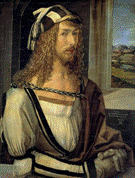Art, Art History and Design, School of

School of Art, Art History, and Design: Faculty Publications and Creative Activity
Document Type
Article
Date of this Version
2003
Abstract
Our goal was to create an anthology that could be used as a supplemental reader by undergraduates and graduate students when studying Northern European art before the eighteenth century. We agreed with our cohort group that there was a need to excite students with the new questions being asked in traditional fields of study. The secondary purpose was to allow colleagues to assess the state of gender-driven scholarship in the art history of Medieval and Early Modern Northern Europe. As it progressed, however, this project became in our minds a celebration of the multiplicity and exuberance of the new production in our area despite institutional structures.
Saints, Sinners, and Sisters presents original essays addressing gender and art in pre-eighteenth-century Northern Europe. Familiar works or artists, such as Albrecht Dürer or Jan Steen, are the focus of several articles and these writings easily can be incorporated into introductory syllabi. Familiar topics, like the theme of domesticity in Dutch art, also can be found here, but the approaches taken tend to question traditional interpretations of such popular topics as the ill woman or the cook. In addition, it was our hope that the less familiar works included here could be integrated into classrooms to stretch definitions. With that goal in mind, we have included both works by less well-known artists like Jörg Breu or Sebald Beham, and works in less discussed media, such as ivories, gems, and tapestries.
The message has been clear through the centuries. On the tympana of medieval churches and in Hollywood films, women are portrayed as either good or bad, saintly or sinful. This volume takes issue with such bipolar readings and offers a third alternative to the traditional dualistic view of women that permeates the literature on Northern European art of the Medieval and Early Modern periods. While some of these essays examine women within the traditional dichotomies, others demonstrate the range of possibilities available to females in Northern society. By widening the sight lines, we reveal that Northern Medieval, Renaissance, and Baroque art depicted women in a myriad of roles that revealed the various possibilities of their lives. With those additional images comes a more complex and nuanced understanding of early European women and the possibilities open to them.
Thus our book is divided into two sections: “Saints and Sinners” and “Sisters, Wives, Poets.” The first section of the book offers new essays within the traditional dichotomy, while the second section points toward new directions for study including women as nuns, wives of artists, and poets. We hereby throw down the gauntlet to art historians of Northern European art, as well as to those of other times and places, to challenge the old dualistic view of women and expand on it, so that women—and thus gender—are understood in a more expansive manner.


Comments
Published in Saints, Sinners, and Sisters: Gender and Northern Art in Medieval and Early Modern Europe, edited by Jane L. Carroll and Alison G. Stewart (Aldershot: Ashgate, 2003), pp. xvi–xxiv, 5–6, 71–72, 157-160. Copyright © 2003 Jane L. Carroll and Alison G. Stewart. Used by permission.